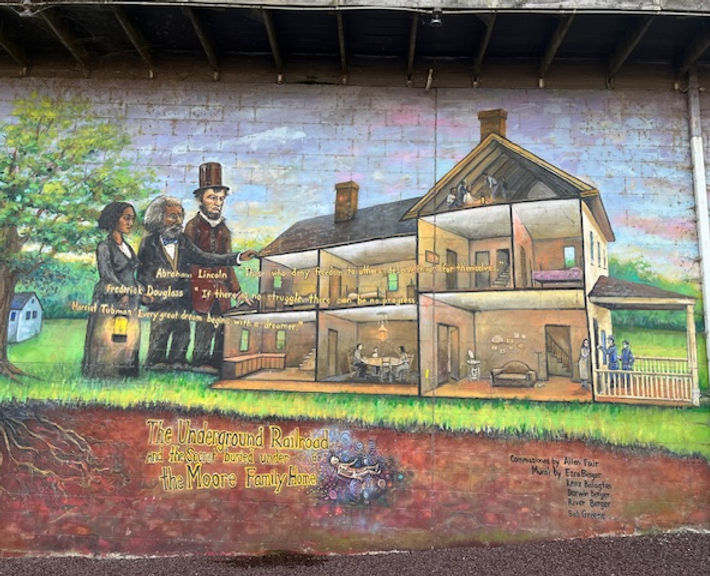
Underground Railroad

Because of its location at the intersection of the Susquehanna River and the Chesapeake Bay, Havre de Grace was a waystation for many freedom seekers. Some, like Frederick Douglass, Henry “Box” Brown, and William and Ellen Craft, fled to the North on the actual railroad that passed through our city. Others used the secretive network known as the Underground Railroad. According to William Whipper, a prominent African American abolitionist and Pennsylvania station master, the most popular line of travel for freedom seekers was from Baltimore through Havre de Grace and onward to Philadelphia. Another prominent abolitionist, Lewis Tappan, disclosed that he assisted freedom seekers in their flight across the Susquehanna River. He said that it was customary for an agent at Havre de Grace to kindle a fire to give notice to the agent across the river that he had a person needing assistance. That person then crossed the Susquehanna by boat to retrieve the escaped slave.
A number of individuals who made it to freedom in Philadelphia reported to William Still, the “Father” of the Underground Railroad, that they had self- emancipated from and/or through Havre de Grace. In 1850 alone, several such men arrived in Still’s office. Major Ross made his way to freedom from the farm of John Jay. Months after Ross, Sydney Hopkins and Henry Wheeler travelled together to the North. Sydney reported that he would forever regard Jacob Hoag, his enslaver, as the person who cheated him out of himself and prevented him from becoming enlightened and educated. Henry told Still that he suffered greatly under Amos Barnes who daily managed him like the horses and mules that he also owned.
The 1842 Prigg v. Pennsylvania Supreme Court case caused the popular route to freedom to move away from Havre de Grace to a more northerly route through York, Pennsylvania. That case involved Margaret Morgan, a woman born into slavery in the Dublin area of Harford County. It upheld the constitutionality of the federal Fugitive Slave Law which empowered slave owners to reclaim escaped slaves and imposed penalties on those who aided them. This made crossing into the North exceedingly dangerous for freedom seekers and those that assisted them.In 1858, Daniel Craner, a White resident of Havre de Grace, was convicted in Harford County Circuit Court on the charge of “enticing a slave to run away” for attempting to help Ann Howard, the slave of Elizabeth Woodcock, escape. He was sentenced to ten years in the Maryland Penitentiary, six of which he served until he was pardoned by Governor Bradford in 1864.
Havre de Grace’s location made it a vital stop on the path to freedom for many enslaved people. Stories of individuals like Major Ross, Sydney Hopkins, and Henry Wheeler highlight both the brutality of slavery and the determination to escape it. Despite increasing danger, the city remained a key crossing point thanks to the courage of freedom seekers and those who aided them.



